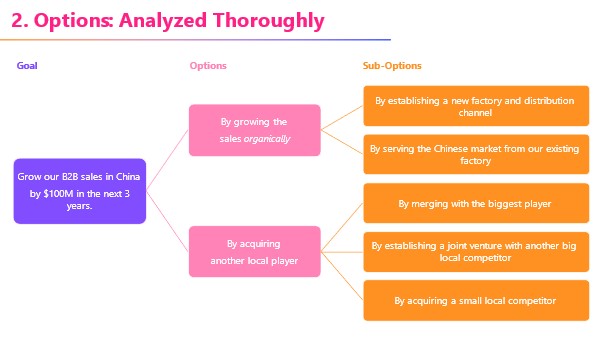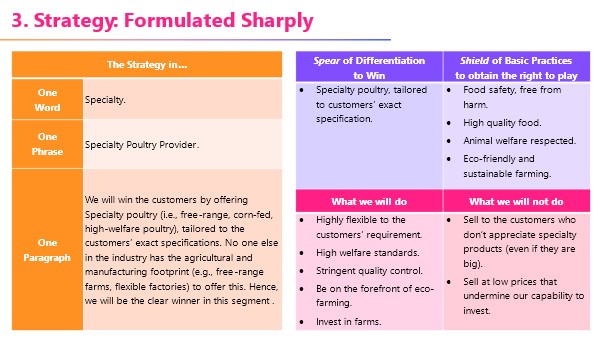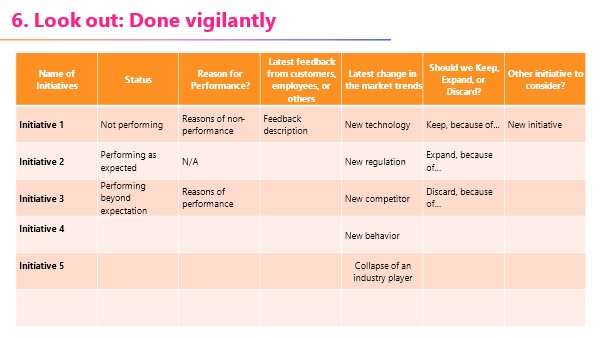Simplify My Strategy, Please!
- Dr. Marvilano

- Jul 6, 2023
- 3 min read
"Simplicity is the ultimate sophistication." - Leonardo da Vinci -
"Death by details" is a common problem in many strategy projects. However, in strategy, less is often more – as shown by the case below.
One of my clients was a new CEO of a multi-billion dollar company - let's call him Mark. He was hired to turn around the company which had lost millions of dollars over the last several quarters. Mark realized if he was going to turn millions of dollars lost into millions of dollars in profit, he better have a rock-solid strategy behind him and a crystal clear vision ahead. In essence, he needed to think strategically about it.
To better understand what must be done, Mark hired a strategy consulting firm to help design a strategy for his company. Over three months, the consulting firm completed many interviews, ran numerous meetings and workshops, and analyzed loads of data. It was a large and expensive undertaking, burning thousands of man-hours across the company and, in the end, delivering hundreds of PowerPoint pages.
The problem was that hundreds of PowerPoint pages were too much, so Mark contacted me. His goal wasn't to know everything about the company but to know the right things to help him turn around the company. In the end, what Mark most wanted was a simple strategy that is easy to understand, communicate, and implement – that, once implemented, would deliver results.
Mark e-mailed me all the Powerpoint documents. There were dozens, each thick and jam-packed with detailed information. Even the Executive summary was more than fifty pages long, crammed with hard-to-digest charts. A section of the document looked like this:

My eyes and brain were bombarded with bullet points and charts! I spent several days just trying to find what mattered most – while making sure not to miss any small yet critical detail. I was quickly becoming saturated with details at the expense of the big picture. The sad thing was that there was a lot of great information and insight; it was buried so deeply and spread so widely that nobody could find it.
So I scoured through everything and then mapped it into the six steps of winning, i.e., GO.S.P.E.L. and then scoured through, mapping what I found onto paper:
1. Define the Goal = what ultimate goal the company was trying to achieve and measurable targets derived from that goal.
2. Analyze the Options = What paths the company could take to achieve its goal, as well as the pros and cons of each path.
3. Shape the Strategy = The chosen option that would make the company a winner, with clear implications of what the company will do and will not do – all summarized in one simple phrase and, if possible, a single word.
4. Derive the Plans = The list of prioritized initiatives that would deliver the strategy, including the hardware, software, and operating system types of initiatives.
5. Drive the Execution = How the company was set up to implement the initiatives, i.e., who would do what, by when, with what resources, and under which control routine.
6. Look out = The list of metrics to be tracked to ensure the company is on the right path, i.e., the strategy is delivering, and there is no significant change in the internal and external circumstances of the company.
The output was a simple document summarizing all the hundreds of PowerPoint pages, into six simple pages (each corresponding to the six winning steps), distilling the most important insight of all. When looking at these six simple pages, Mark could easily see the strategy and how the turnaround would be achieved.
Below is the template of the six simple pages that I used.
Compared to the impenetrable wall of massive documents, this simple six-page document served Mark well – both as a tool to understand and communicate his strategy. Mark had the document printed in A3 size, which he brought with him everywhere so he could share it with as many stakeholders as possible.
Twelve months later, the company successfully turned around its performance into making millions of dollars in profit. And to this day, Mark still carries around the updated version of the simple six pages in A3.
This is the power of a clear and well-communicated strategy!
So next time you are overloaded with hundred pages of charts and bullet points, get your team to summarize them into these six simple pages. You can download the blank template below:
"Simple can be harder than complex. You have to work hard to get your thinking clean to make it simple." - Steve Jobs -













Comments